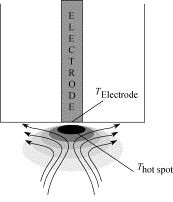| [1] |
张竹涵, 蒋峰景, 吴珂科, 申鹏. 基于3D固态负极的铁铅单液流电池研究[J]. 化学学报, 2022, 80(1): 56-62. |
| [2] |
孙延慧, 齐有啸, 申优, 井翠洁, 陈笑笑, 王新星. 基于RGO-Au-ZIF-8复合材料的电化学传感器制备及其在铅离子和铜离子同时检测中的应用[J]. 化学学报, 2020, 78(2): 147-154. |
| [3] |
朱从潭, 杨英, 赵北凯, 林飞宇, 罗媛, 马书鹏, 朱刘, 郭学益. PEDOT的电化学合成及其在固态染料敏化太阳能电池中的应用研究[J]. 化学学报, 2020, 78(10): 1102-1110. |
| [4] |
宋光捷, 武调弟, 刘福鑫, 张彬雁, 刘秀辉. 壳聚糖/氮掺杂还原氧化石墨烯修饰电极对黄嘌呤的检测及尿酸抑制的研究[J]. 化学学报, 2020, 78(1): 82-88. |
| [5] |
张太阳, 赵一新. 铅卤钙钛矿敏化型太阳能电池的研究进展[J]. 化学学报, 2015, 73(3): 202-210. |
| [6] |
孟晨鹏, 王舜, 张克军, 金辉乐, 陈锡安, 胡茂林, 熊静. 2-(5-氟尿嘧啶-1-乙酰基)氨基-1,5-戊二酸二甲酯手性异构体与双链/G-四链体DNA相互作用的电化学研究[J]. 化学学报, 2011, 69(10): 1173-1178. |
| [7] |
白青龙, 张春花, 程传辉, 李万程, 杜国同. α和β-四(4-甲氧基苯氧基)酞菁锌的合成、表征和电化学性质[J]. 化学学报, 2011, 69(08): 949-954. |
| [8] |
许文菊, 袁若, 柴雅琴. 新型五齿Schiff碱为敏感载体的铅(II)离子电极的电位响应行为[J]. 化学学报, 2011, 69(06): 757-760. |
| [9] |
李忠, 刘岩, 何忠, 范辉, 郑华艳. Cu/Zn比对微波辐射老化制备CuO/ZnO/Al2O3催化剂结构和活性的影响[J]. 化学学报, 2011, 69(05): 570-576. |
| [10] |
邓萌, 汪茫, 陈红征. 聚吡咯涂层的电化学合成及对神经微电极电性能的影响[J]. 化学学报, 2011, 69(04): 477-482. |
| [11] |
罗秀娟, 杨春, 陈煜. 共价键联的多金属氧酸盐/SBA-15介孔杂化材料的电化学性质研究[J]. 化学学报, 2011, 69(01): 1-7. |
| [12] |
张治红, 梁燕, 闫福丰, 闫立军, 豆君, 李彦山, 王力臻, 郑先君. 无标记DNA在氨基改性导电聚吡咯表面的固定/杂交[J]. 化学学报, 2010, 68(9): 833-838. |
| [13] |
韩莹, 李恒恒, 沈明, 李亮, 徐桂英. 微波辅助4-十二烷氧基苄胺保护的憎水性纳米金原位还原合成[J]. 化学学报, 2010, 68(18): 1813-1820. |
| [14] |
张治红, 豆君, 李进博, 牛晓霞, 闫福丰, 王力臻, 马志. 导电聚吡咯共聚物薄膜的功能基团种类对蛋白质吸附的影响[J]. 化学学报, 2010, 68(13): 1313-1318. |
| [15] |
张莉娜, 王金意, 张涵轩, 蔡文斌. RuO2/TiO2纳米薄膜的新构建及对CO2的电催化还原[J]. 化学学报, 2010, 68(06): 590-593. |
